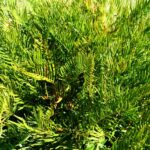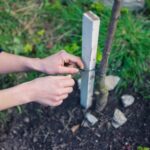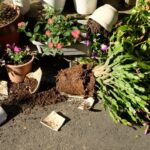The end of February and the beginning of March are the perfect times to prepare for spring planting in Sarasota, Florida. Read on as Troy’s Tropics expands on tips for spring planting by delving deeper into such essential preparation steps as fertilization, trimming, checking your irrigation system, and applying fungicides.
How to Prepare for Spring Planting
So, how do you prepare for spring planting in Florida? Take note of the following tips:
Tip #1: Start Choosing What to Plant
Check out the options at a wholesale nursery in Sarasota, FL.
Tip #2: Start Fertilizing
Late February and early March mark an optimal time to begin fertilizing for spring planting and tending to fruit trees like mangos, avocados, and citruses. Nitrogen, phosphorus, and potassium, essential components in fertilizers, each play distinct roles:
- Nitrogen fuels rapid growth and lush green lawns
- Phosphorus strengthens roots
- Potassium bolsters disease resistance and overall plant health
A soil test can guide you in fertilizer selection by revealing nutrient deficiencies in the soil.
Choosing fertilizers with less phosphorus is crucial to mitigating the adverse effects of excess phosphorus on the environment. The ground already contains sufficient phosphorus, and the additional application of phosphorus-rich fertilizers exacerbates issues such as undesirable algae and plant growth. Moreover, the runoff of excess phosphorus during stormwater events disrupts native plant and wildlife habitats, affecting food sources and overall ecosystem balance.
Notably, there’s a compelling theory linking excess phosphorus to the occurrence of red tide in the Gulf of Mexico. This phenomenon is attributed to Karenia brevis, an algae species that thrives on phosphorus, among other nutrients. These toxic algae outbreaks devastate marine life, including fish, birds, sea turtles, manatees, and dolphins, and pose a significant risk of shellfish poisoning to humans. Therefore, adopting practices that reduce phosphorus runoff is vital to safeguarding aquatic ecosystems and public health.
Avoid high nitrogen and potassium levels and refrain from using combination products like “weed and feed” to adhere to eco-friendly practices. Responsible fertilization, tailored to plant needs, fosters cost savings, reduces pests, and sustains plant vitality.
Tip #3: Good Time to Trim Shrubs and Palms
Apart from hibiscus, early spring is a great time to trim shrubs and palms in Sarasota, Florida, for several reasons. Firstly, as temperatures begin to rise and daylight hours increase, plants enter a phase of active growth. They are no longer dormant and can heal better after pruning.
Additionally, trimming during this period allows for the removal of any winter damage or dead growth, promoting overall plant vitality.
Furthermore, starting early in the season ensures that pruning is completed before the onset of the hot and humid summer months, reducing stress on the plants and minimizing the risk of sunburn and heat-related damage.
Overall, early spring serves as a prime window for pruning shrubs and palms, setting the stage for lush and vibrant landscapes throughout the rest of the year in Sarasota.
Tip #4: Check the Irrigation System
Here’s a step-by-step guide to make sure your irrigation system is in top shape:
1. Inspect Sprinkler Heads
Your sprinkler heads are the frontline soldiers in your irrigation system, and they work hard to keep your lawn and plants hydrated. Start by inspecting each sprinkler head to ensure they’re functioning properly:
- Check Alignment: Look for any misalignments caused by mowers or heavy foot traffic. Make sure all heads pop up fully when activated and retract completely when turned off. Misaligned heads can lead to uneven watering and damage from lawnmowers.
- Clear Obstructions: Ensure that no sprinkler heads are blocked by tall grass, plants, or other obstacles. If necessary, adjust the height of the sprinkler heads to ensure proper coverage.
- Clean or Replace Nozzles: Clogged nozzles can affect the distribution of water. Clean or replace any clogged nozzles to maintain optimal performance.
2. Check Your Backflow Device
The backflow device is a crucial component of your irrigation system, preventing water from flowing backward and contaminating the potable water supply. Here’s what to do:
- Verify Valve Position: Ensure that the handle on your backflow valve is in the correct position. If it’s inadvertently shut off, it can restrict water flow to your sprinkler system valves.
- Confirm Functionality: Check for any signs of damage or leaks in the backflow device. It should allow water to flow through your irrigation system in one direction without obstruction.
3. Adjust Watering Schedule
Different plants have varying water requirements, so it’s essential to tailor your watering schedule accordingly. While individual instructions may vary, a general rule of thumb is to water plants at least once a week. Monitor soil moisture levels and adjust the watering frequency as needed to prevent over- or under-watering.
Tip #5: Apply Copper Fungicides to Fruit Trees

Applying copper fungicides to fruit trees in early spring is a vital practice for citrus growers. Copper could be compared with a protective “medicine” for the trees. Copper, an essential micronutrient, not only aids in plant nutrition but also promotes proper plant growth. Without an adequate supply of copper, citrus trees can suffer from deformation in growth, exhibiting symptoms like dark green and enlarged leaves, slender stems, and limb dieback.
Copper fungicides offer a long-term solution for disease control. By adding copper fungicides to your early spring routine, you can promote healthy yields of tasty fruits throughout the growing season.
Troy’s Tropics is a locally owned, full-service garden center and wholesale nursery in Sarasota, FL. Contact us today!






